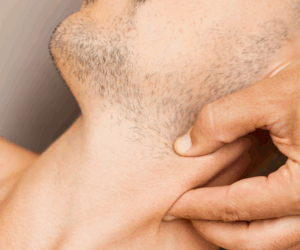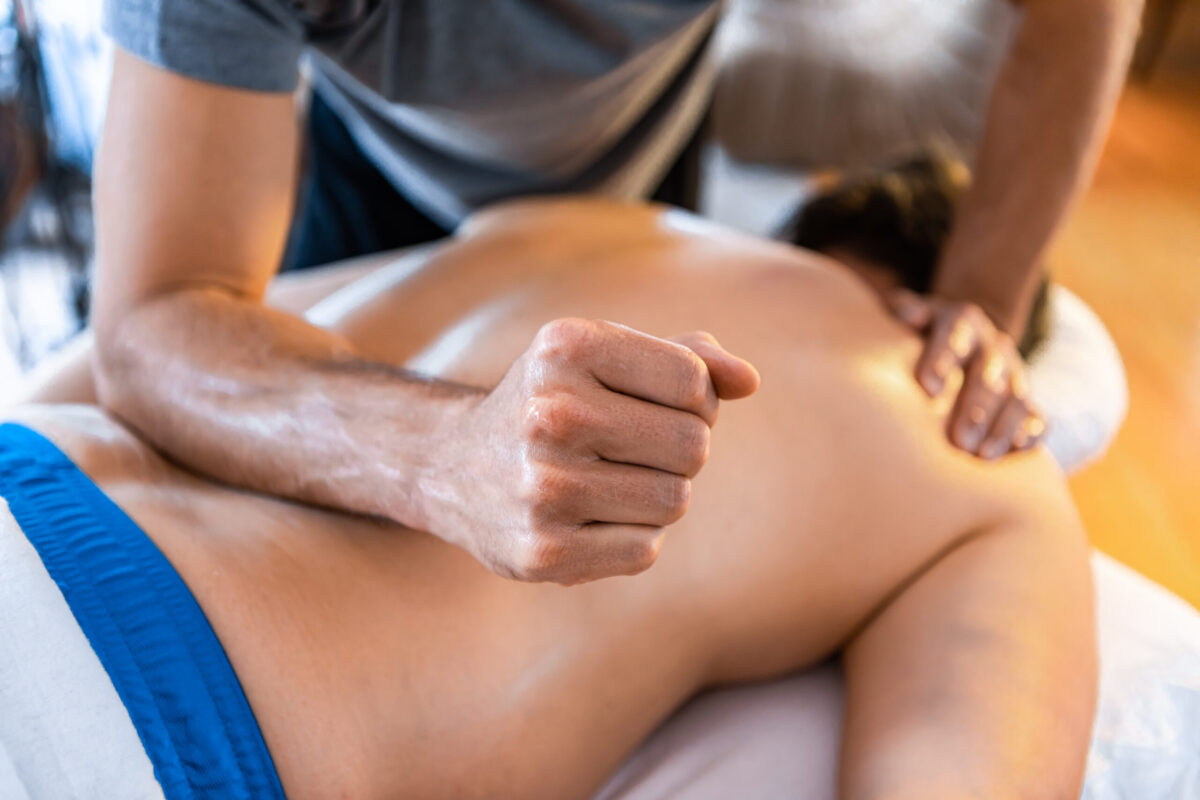Deep tissue massage is a therapeutic technique that targets the deeper layers of muscle and connective tissue in the body. It is particularly beneficial for relieving persistent muscle tension and pain, helping to relax and rejuvenate both body and mind.
What Is Deep Tissue Massage Used For?
Deep tissue massage is commonly used for various issues, including sports injuries, ongoing pain conditions, and muscle tension. By focusing on the deeper layers of muscle and fascia, this technique helps to alleviate tightness and discomfort. Common requests include deep tissue massage for lower back pain. Many clients also ask about deep tissue massage for neck and shoulder pain. For overall well-being, deep tissue massage for stress relief is popular.
How Deep Tissue Massage Works
During a deep tissue massage, a skilled therapist uses slower, more intense strokes, applying pressure to specific areas of tension. This method may involve friction, direct pressure, and stretching to loosen tight muscles and reduce stress. Deep tissue massage techniques include slow strokes, firm pressure, the cross-fiber friction technique applied across the grain of the muscle, and focused stripping along the muscle fibers.

Benefits of Deep Tissue Massage
Many people notice easier movement, calmer breathing, and less background tension after a few consistent visits. For persistent issues, some plans center on deep tissue massage for chronic pain, and progress often comes as deep tissue massage reduces muscle tension and guarded patterns ease.
Circulation and recovery tend to improve together. Deep tissue massage improves circulation, supporting nutrient delivery and waste removal; that’s why athletes often schedule around training blocks and use deep tissue massage for muscle recovery. When nighttime tightness keeps you wired, small changes in pacing and aftercare help, and deep tissue massage and sleep speaks to those patterns.
Benefits also show up in mood and load management. Techniques tied to deep tissue massage and mental health can help down-shift an overactive system, lowering stress reactivity so the work feels restorative instead of fatiguing.
Targeted relief is common when tension concentrates in a few regions. Runners dealing with lateral thigh tightness often try deep tissue massage for IT band pain; desk-driven strain responds to deep tissue massage for neck and shoulder pain; stubborn back issues frequently improve with deep tissue massage for lower back pain.
How Often Should You Get a Deep Tissue Massage?
The ideal frequency depends on your needs and recovery. For injury rehab or long-term pain management, weekly appointments often work best; for general stress relief or maintenance, once or twice a month is usually enough. Talk with your therapist to tailor the plan to your goals. Ultimately, how often deep tissue sessions depends on what you’re working on and how your body responds.


When Not to Choose Deep Tissue Massage
Some situations call for avoiding deep tissue massage altogether—during acute inflammation, with recent injury or surgery, active infection, uncontrolled medical conditions, or when a healthcare provider advises against deeper pressure. In those cases, lighter-touch approaches (for example, Swedish or gentle myofascial work) are a better fit.
Specific discomfort in the neck and shoulders may benefit from focused work. It’s normal to feel some intensity when addressing deep-seated tension, but it should never be sharp or intolerable—tell your therapist so pressure can be adjusted.
What to Expect During a Deep Tissue Massage Session
Before hands-on work, your therapist reviews goals, areas to focus on or avoid, and any health considerations. Sessions use a slower, targeted approach with steady check-ins about pressure and sensation; you’ll agree on simple cues for adjustments and use breath to help tissues let go—so communication stays easy from start to finish.
Focused work can feel intense but shouldn’t be sharp or overwhelming. Many people wonder, does deep tissue massage hurt? Agreeing on pressure ranges up front keeps the work therapeutic. Many notice a productive, easing sensation often called “good pain” in deep tissue massage as guarded areas soften. Typical short-lived reactions—mild soreness or fatigue—fall under side effects of deep tissue massage and usually resolve with hydration, light movement, and rest.
How Long Does a Deep Tissue Massage Last?
Most deep tissue massage sessions last between 60 and 90 minutes, and some as long as 120 minutes, depending on your treatment goals and how many areas need attention. Shorter sessions may focus on a single issue, while longer sessions allow for full-body work with more time to address stubborn tension. In practical terms, how long deep tissue massage last comes down to scope, sensitivity, and how your body responds that day.
How to Prepare for a Deep Tissue Massage
You don’t need to do much to get ready, but wearing loose, comfortable clothing and staying well-hydrated can help. Avoid eating a heavy meal right before your appointment. If you’re dealing with persistent pain or a specific injury, be sure to share that with your therapist so they can adapt the session accordingly. If it’s your first time getting ready for a deep tissue massage, wear loose clothing, avoid a heavy meal, and communicate any specific concerns to your therapist. If you’re sensitive to scents or prefer more or less glide, ask about oil options so the medium suits you.

What Happens After a Deep Tissue Massage?
What happens after a deep tissue massage varies. Some people feel immediate relief, while others notice temporary soreness or fatigue. A short adjustment window is common; gentle movement and rest, if needed, usually help. Staying hydrated after your massage helps flush metabolic waste, supports recovery, and keeps you comfortable—drink water and ease back into activity as your range returns.
Comparing Techniques: Deep Tissue Massage vs. Others
Deep tissue massage targets deeper structures with specific methods to change tension patterns. Swedish massage emphasizes relaxation with lighter, flowing strokes. “Deep pressure” is simply intensity; “deep tissue” is intent and technique. They can overlap, but they’re not the same thing.
Trigger point therapy uses sustained, precise compression on irritable spots that refer pain. Myofascial release relies on slow, prolonged holds to improve tissue glide. Deep tissue typically blends slower strokes and directional work—cross-fiber and stripping among them—to address broader restrictions and restore comfortable movement.
Massage guns deliver rhythmic, percussive input that can feel relieving, but hands-on work provides real-time feedback and finer control over angle, depth, and pace.
Some therapists weave Thai elements into deep tissue sessions, and others use overhead bars for supported barefoot work (ashiatsu). The slow, controlled body-weight pressure and broad contact create depth with even distribution and better leverage—less pointy, more enveloping—while staying within a comfortable pressure range.
Final Touch
Deep tissue massage is a valuable addition to any self-care routine. With its benefits for reducing tension and promoting relaxation, it is an excellent choice for those looking to ease ongoing pain or enhance overall well-being. Understanding its purpose, techniques, and the circumstances in which it is most effective will enable informed decisions about incorporating deep tissue massage into your wellness journey.


